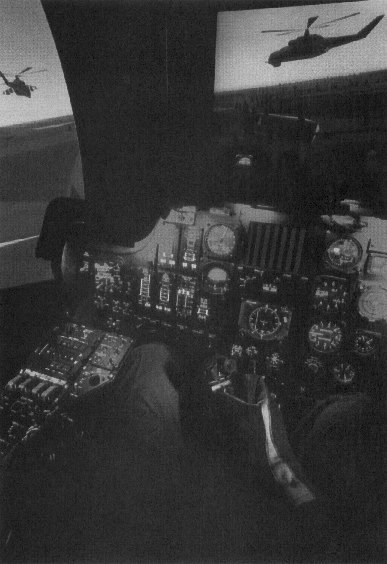Gunship Academy
by Richard Sheffield
Chapter 12
The Super Simulator
* * *
Chapter 12
Training a crew to fly and fight with the Apache is no easy task. The aircraft was designed to fight at maximum standoff range to increase survivability, but in practice, live rounds are never fired at the limits of their range.
Finding a place to practice is another major problem. The TADS targeting system uses a powerful laser which could be dangerous to people or animals in the training area. Practice areas with suitable terrain are scarce in the U.S. and don't exist at all in Europe (due to the density of the population), yet most of the Apaches will be stationed there.
With Apache training costs running almost $3,000 per hour, Hellfire rounds running $30,000 each, and 30mm gun rounds going for $13.70 apiece, it was obvious that a training simulator was needed. Proposals were received and Singer/Link was awarded the contract. Having previously designed and built the simulator for the Space Shuttle, Singer/Link seemed a natural choice to develop the even more sophisticated simulator needed to train crews for attack helicopter missions.
The Combat Mission Simulator (CMS) developed by Singer/Link is truly the most advanced simulator operating today. It is the first military simulator that really fights back, thus providing a true combat experience. This is very important as only 25 percent of the pilots in the Army today have any experience in combat and none have experience against the newer Warsaw Pact front-line weapons.
With the CMS, pilots can not only sharpen their flying skills, but can also get the feel of combat and psychologically prepare themselves. They have a chance to learn to overcome the tendency to freeze up when under fire for the first time.

Thirty-eight 32-bit computers working in parallel with central timing are required to provide the control and realism required by the Army. The mainframe units are state-of-the art Perkin-Elmer 3250 processors. The system is most easily understood by looking at its major components individually.
Table of Contents
Previous Section: The Making of Gunship
Next Section: The Battlefield
